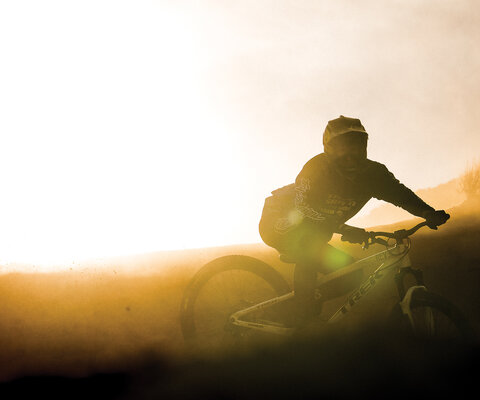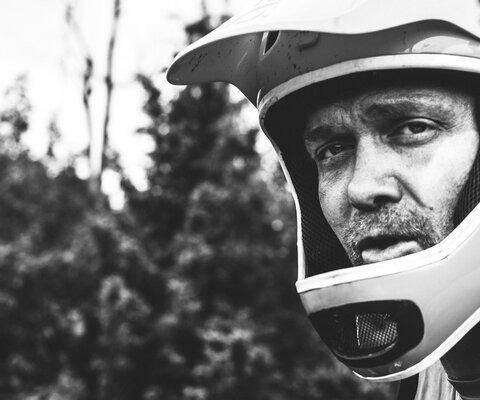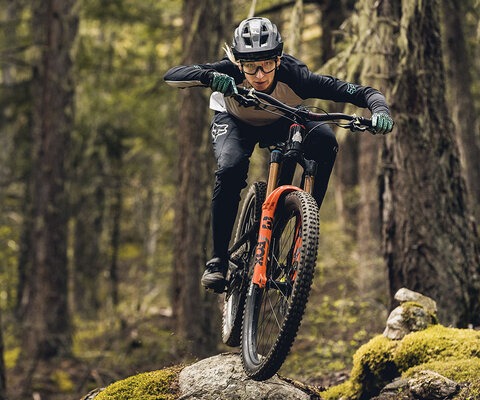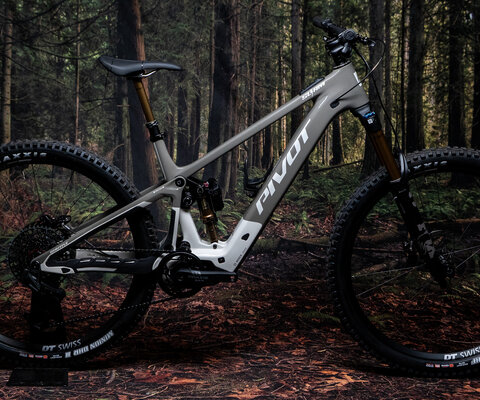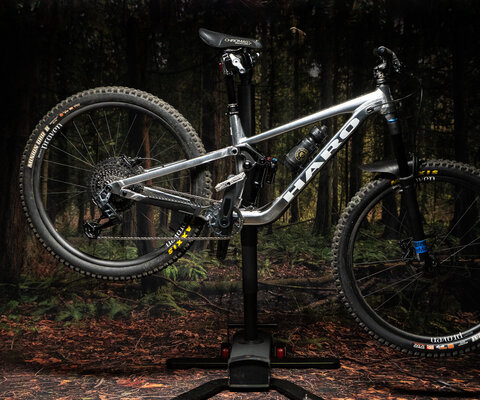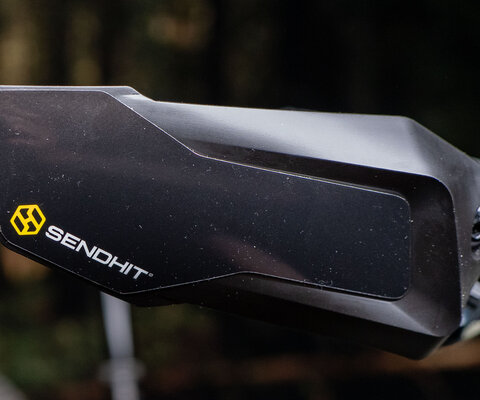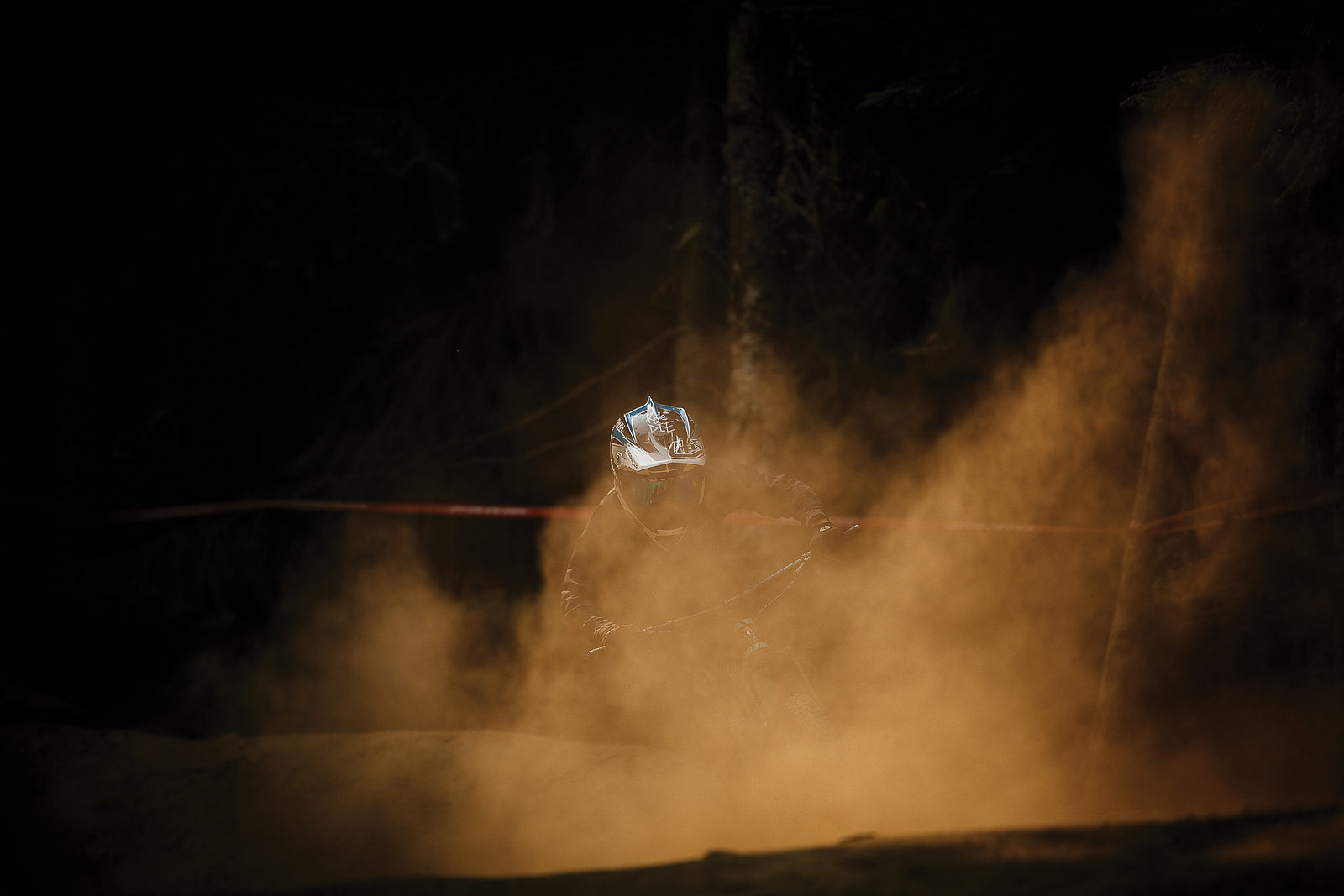
Generation Next A Quantum Leap in Progression
Words by Brice Minnigh
You might well know the feeling: You’re fully pinned on your go-to trail, railing corners and generally having the ride of your life, when suddenly a pack of tiny teenagers flashes past you in a pint-sized flurry of speed and fury, leaving you in dust clouds of shock and disbelief.
If you haven’t experienced this phenomenon, then brace yourself. Because it’s coming soon to a trail near you. And when it comes, this runaway train of little humans will blaze by you so quickly you’ll only wish you could be the caboose.
In the past few years, a new generation of next-level rippers has emerged, giving glimpses of raw brilliance seldom before seen at such tender ages. We’re talking about kids 11 and 12 years old who are dropping their semipro-level parents on some of the world’s most challenging trails. Or 15-year-old downhill racers who are qualifying at times faster than some of the World Cup circuit’s elite men. Even on the freeride front— until recently the domain of male riders—15-year-old girls are joining massive jump sessions with the likes of Logan Peat and Brandon Semenuk. The sheer talent of these young shredders has many predicting we’re on the verge of a quantum leap in progression—one that is bigger and more profound than anything our sport has ever seen.
“What we’re seeing right now is completely nuts,” says Anthill Films’ co-founder Darcy Wittenburg, who lives in Squamish, British Columbia, where he routinely witnesses 12-year-olds dropping their fathers on the area’s most technical trails. “Here in Squamish, we’re seeing elementary school kids who are riding better than many adult semipro riders. They can already ride the hardest lines in Squamish, which is one of the hardest places in the world to ride. And because these kids are so young, we’re only getting an inkling of what the next waves of progression are going to be like.”
For the moment, this trend is more pronounced in places already renowned for pushing the progression envelope—particularly in British Columbia, where virtually every town from the province’s rugged interior to the coastal Sea to Sky Corridor to Vancouver Island has world-class trails and a vibrant riding culture.
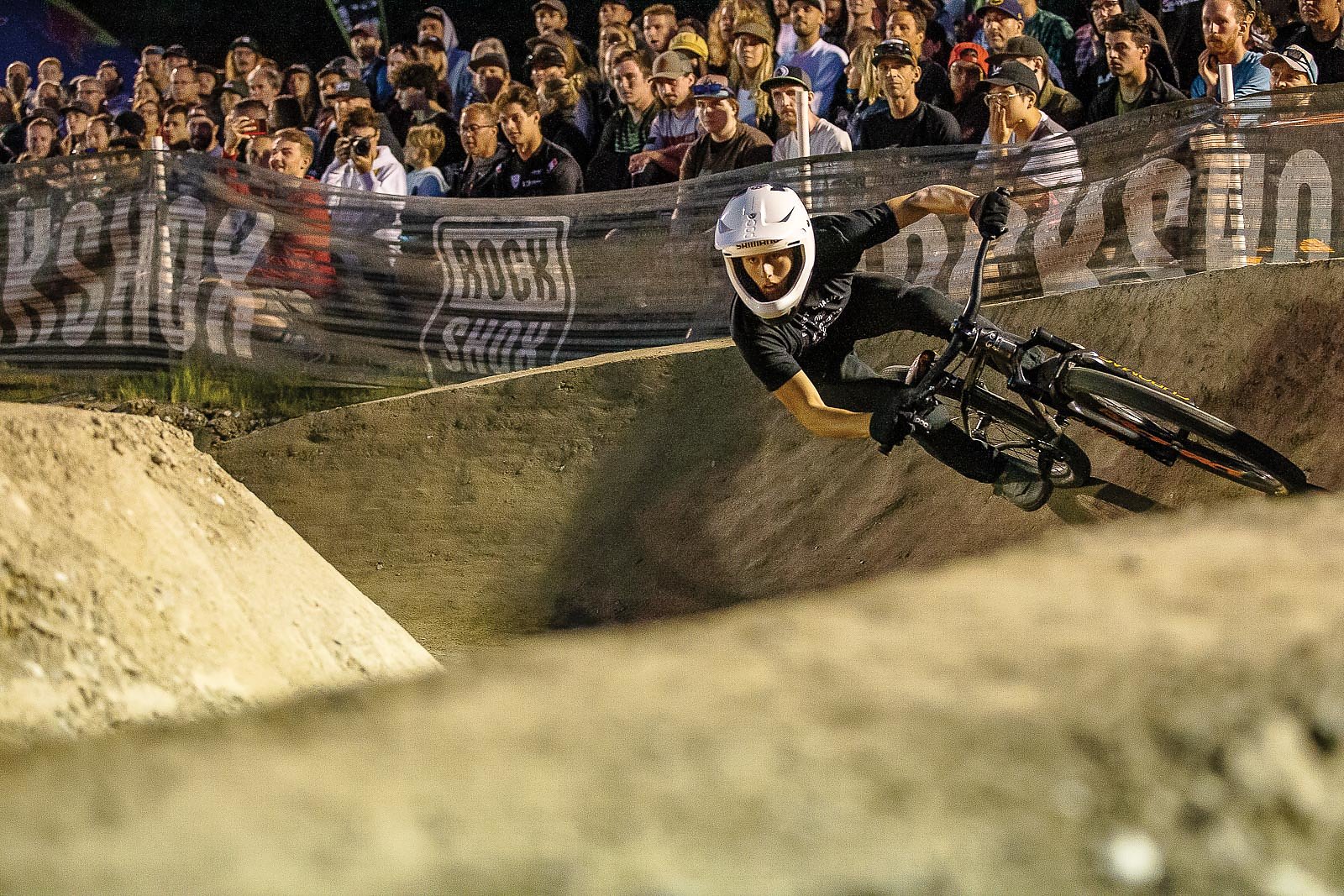
“For kids growing up in BC, especially between North Vancouver, Squamish, Whistler and Pemberton, they’re surrounded by a riding culture and some of the world’s best trails, so progression just comes naturally at a very young age,” says Scott Jewett, a Squamish-based sports marketing specialist and the father of two of the world’s fastest teenage riders.
“It’s no different than the kids who grow up on the North Shore of Oahu and go on to become some of the world’s best surfers,” Scott says. “Here, if the parents are super into mountain biking and get the kids into it at an early age, riding bikes at a high level is pretty much a given.”
This was certainly the case with Jewett’s two sons, Jakob and Dane, both of whom were riding bikes on dirt without training wheels at the age of 2—literally “still in diapers,” according to their mother, Wendy Jewett.
“We were living in Whistler then, and there was an old mountain bike trail 20 feet from our door,” Scott says. “Jakob started riding down that thing on training wheels when he was 2 years old, and he kept ripping them off. I got tired of going to the Canadian Tire in Squamish to get new training wheels, so I eventually just took them off. He was riding downhill without them at 2 years of age.”
Jakob’s younger brother, Dane—three years his junior—was not to be outdone.
“By the time Dane was 2, he wouldn’t even use training wheels because he knew his brother didn’t,” Scott says. “Dane’s been on the fast track from the very beginning because he was always seeing his big brother ripping it up on the bike.”
“Dane’s been on the fast track from the very beginning because he was always seeing his big brother ripping it up on the bike.”—Scott Jewett
Fast forward 15 years and the Jewett brothers are among the world’s fastest riders in their age groups. Jakob, now 17, topped the podium in every single BC Cup Downhill Series race in 2019, while also winning the 2019 Canadian National Downhill Championship in the expert 15-16 boys division. Adding to his accolades, he won the 2019 Crankworx Whistler Air DH race in the youth 15-16 division, and after qualifying to compete in the pro category for the 2019 Crankworx Whistler Ultimate Pump Track Challenge, he plowed his way past a field of the world’s top professionals to claim fourth place in the event.
“I came into the pumptrack event with a goal of just qualifying, so for sure I exceeded my expectations,” Jakob says. “That whole moment really meant a lot to me.”
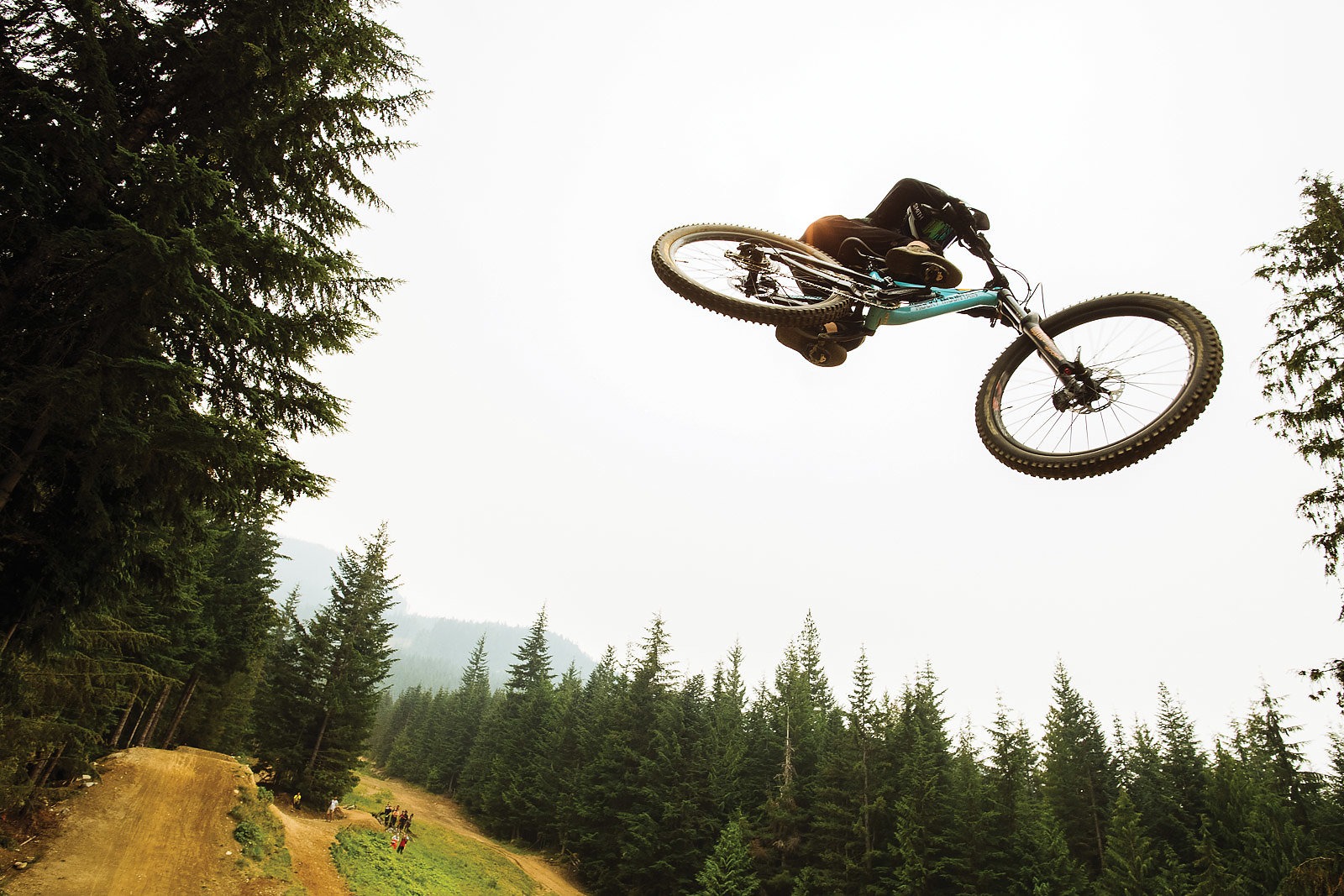
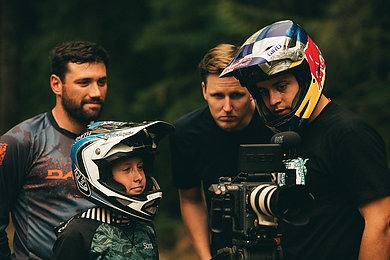
That moment helped pave the way for Jakob’s induction to the Canyon Factory Downhill Team this year, where he will join the likes of Troy Brosnan, Mark Wallace and Kye A’Hern on the elite men’s World Cup race circuit. Jakob is not alone: He’s one of a growing number of teenagers who are being groomed for elite World Cup domination. Guys like Lucas, Tegan and Levi Cruz, a Pemberton-based band of brothers who cut their riding teeth in the BMX racing realm, are now stepping onto podiums across British Columbia and beyond.
The middle Cruz brother, Tegan, who will turn 15 in September, has just joined the SRAM/TLD Racing team, following in the weighty footsteps of his 18-year-old brother Lucas, who finished third in the 2019 overall Junior World Cup DH standings with support from SRAM/TLD Racing. This year, the speedy siblings will both be riding for Norco, with Lucas entering his first year of racing in the elite division as a member of the Norco Factory Team DH. Those with trained eyes will be waiting to see their results.
“I’m lucky to have grown up in a mountain bike mecca like Pemberton,” Tegan says. “We all grew up riding bikes with our parents and brothers, and every day after school we’d go on a mountain bike ride or go to the BMX track and train. Having such a fast older brother like Lucas definitely paved the way into mountain bike racing for me.”
While the steep, rocky trails of Pemberton gave the Cruz brothers a healthy appetite for meaty terrain, their close proximity to the Whistler Mountain Bike Park provided the sweet pudding of flow and massive jumps, rounding out their recipe for accelerated progression.
“We have a lot of rocky terrain in Pemberton, and the flow of our trails is limited, so we were lucky to be so close to the Whistler Bike Park,” says Tegan’s father, Ernesto Cruz, a longtime mountain biker who worked for 12 years as a ski patroller for Whistler/Blackcomb and has been riding in the Whistler Mountain Bike Park since it first opened. “During all those years, I really saw the progression of trailbuilding, and I learned how important it was to have trails from beginner to intermediate to advanced levels. It really allowed the kids to get into the sport and have fun and then continue to progress.”
It wasn’t just the range of trails in the Whistler Mountain Bike Park that enabled this new generation of pinners to progress. It also was the easy access to coaching programs, such as the park’s summer DFX Kids programs, which parents from Vancouver to Pemberton have long viewed as a de facto daycare for their children.
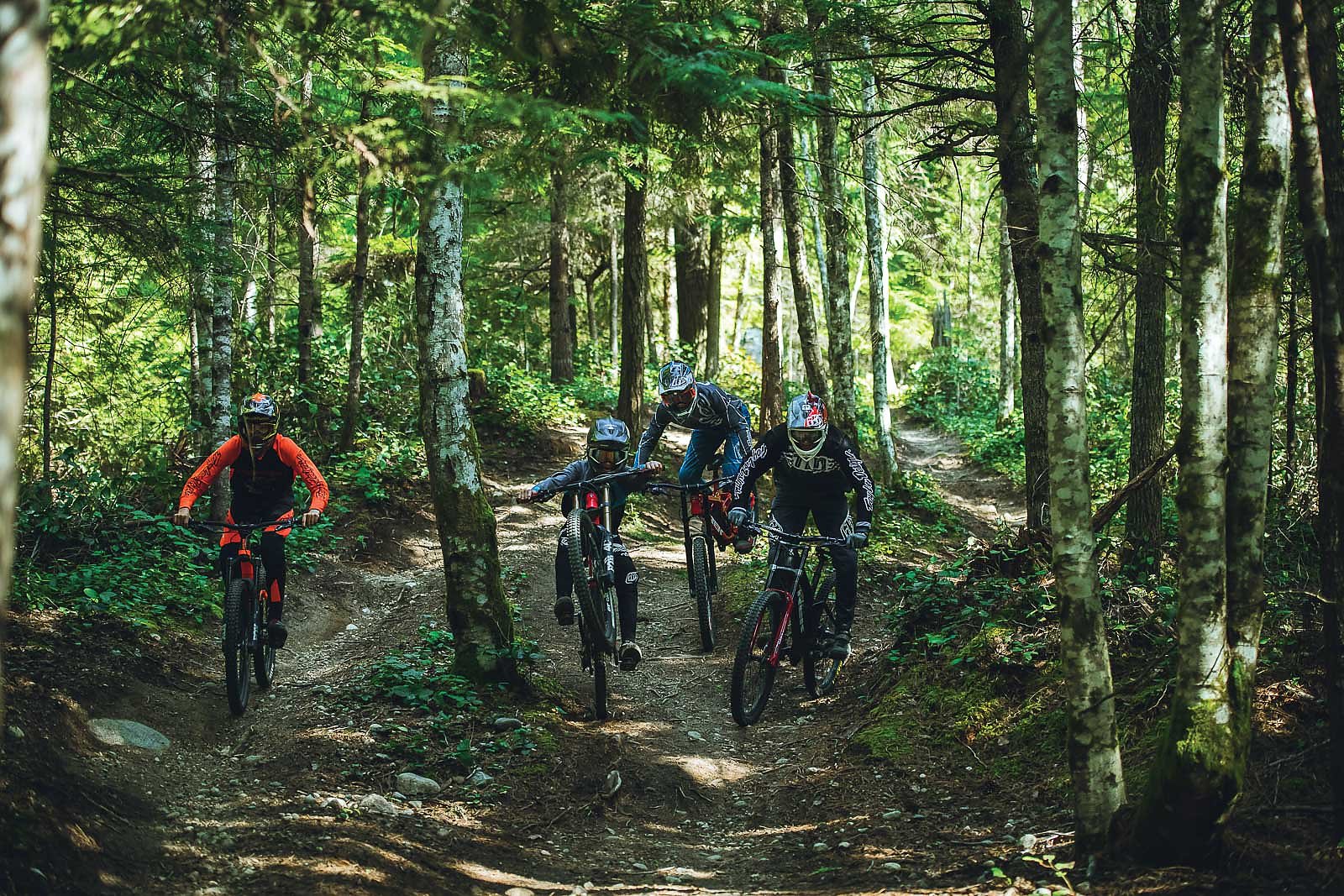
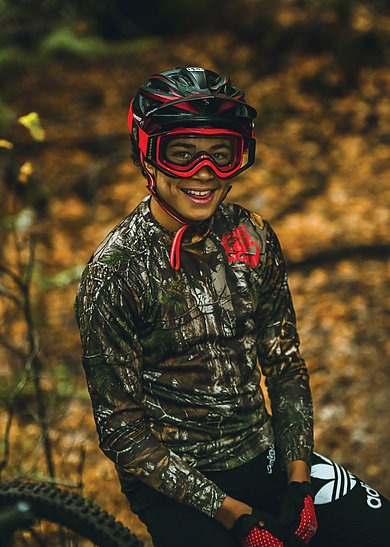
“I was sending my boys to DFX at age 5, and many of the parents were doing that because it was actually cheaper than daycare and way more fun for the kids,” Ernesto says. “Thanks to DFX, the boys were riding higher in the park by age 6, and they just became fearless. By the time Lucas was 11, I couldn’t even keep up with him anymore. I would clear everything on Dirt Merchant and A-Line and I still couldn’t catch him. It sounds crazy when you think about it.”
This is a story that is echoed by one father after another, from Wittenburg to Cruz to Jewett, whose sons routinely drop him within seconds of rolling into Squamish trail rides, stopping only out of concerns for their father’s safety.
“These days I only catch up to Jakob and Dane because they’re waiting for me at a crux line that they’ve usually built themselves because the trail is no longer gnarly enough for them,” Scott says. “They don’t want me to take the same line because it’s too dangerous.”
Another up-and-coming racer who is constantly in search of more challenging terrain is Bodhi Kuhn, a child prodigy from Rossland who has been tearing up technical trails throughout British Columbia since he was 5 years old—and the videos of him that have been circulating on the internet for the past several years prove it. Bodhi, who will turn 15 in May, won seven consecutive races last year in the under-15 division, including the BC and Canadian National Downhill Championships and Crankworx Whistler’s Air DH and Dual Slalom events. This year, he’ll be riding for Trek Bikes and competing in the under-17 Expert category, and he has the Elite Men’s World Cup circuit in his sights.
As a kid who’s been celebrated for sending it on big jumps and burly trails since elementary school, Bodhi and his father, Ryan Kuhn, credit the advent of legitimate kids’ mountain bikes for much of his early progression. After starting out riding trails on a BMX bike with coaster brakes, he graduated to a 20-inch Lil Shredder Prodigy mountain bike that was specifically designed to help a miniature human perform and reach their highest potential.
“He got the Lil Shredder when he was 7, and it was a complete game changer,” Ryan says. “We were going out and doing laps at freeride parks like Silver Star and Bodhi was just killing it. By the time he was 8 years old, we were doing A-Line laps in Whistler and he was hitting every tranny and just going to the moon. That bike allowed him to progress that much quicker and enjoy riding that much more.”
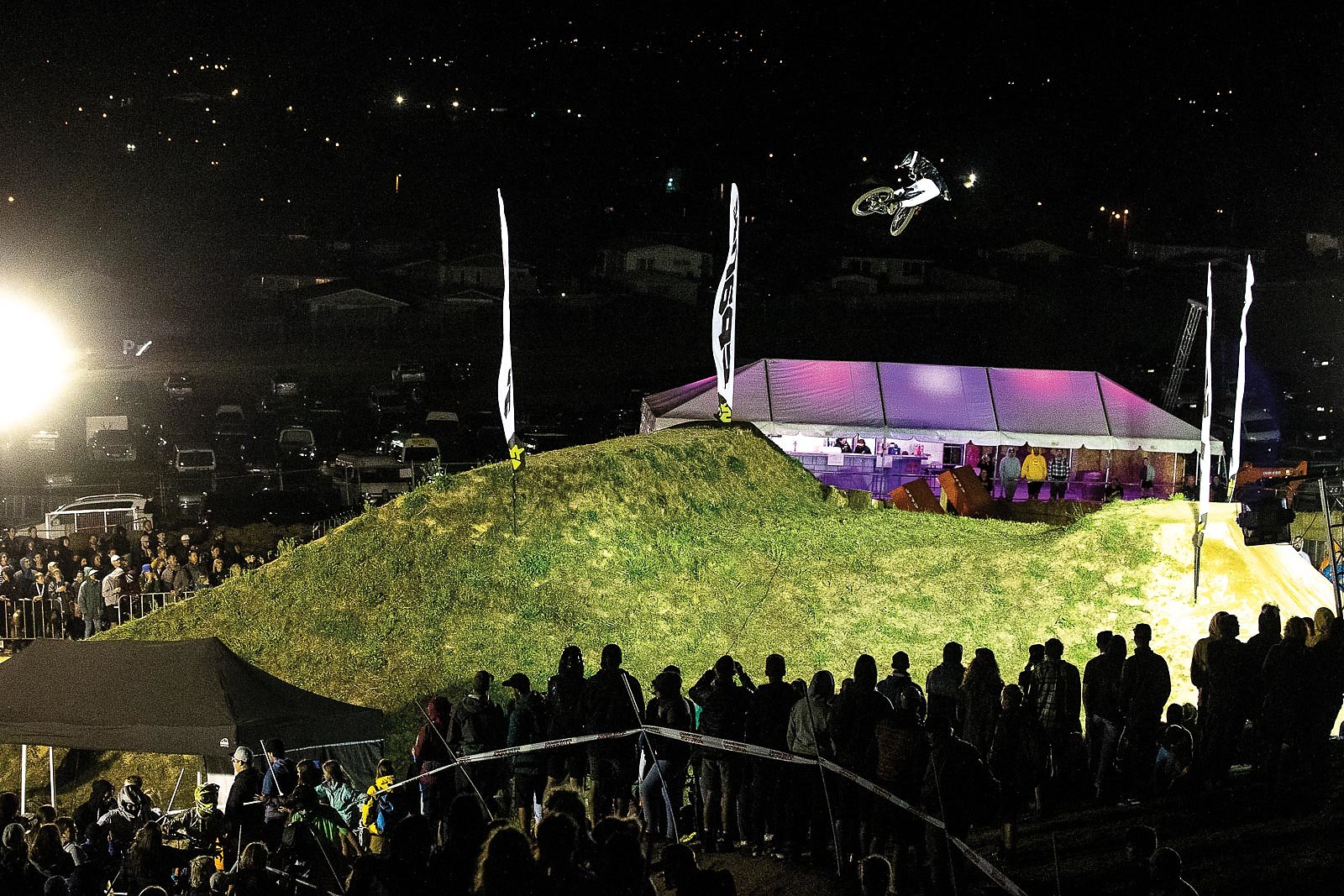
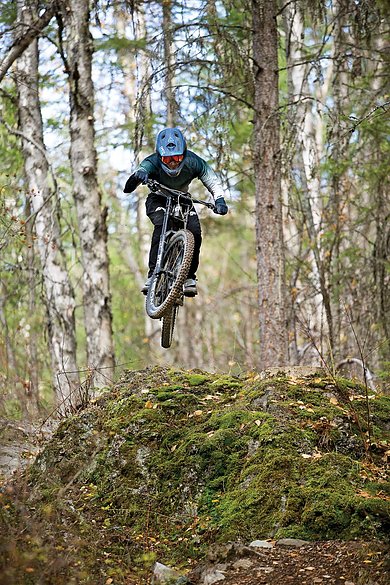
In the eyes of many parents, the emergence of proper kids’ mountain bikes—with sizing and geometry truly adapted to young children—is the single-biggest factor in the sea-change of progression we’re now witnessing in junior racing levels in British Columbia and beyond.
“It’s no coincidence that elementary and high-school kids in our area are riding better than most adults right now because they’ve been riding since they were toddlers on bikes that were actually designed for them” says Darcy, whose older son, Max, has been riding a bike that fit him from the moment he started.
“Before these bikes were developed, you had to be 14 or 15 before you could really start mountain biking,” Darcy adds. “Now you can start when you’re 5 or 6, and by the time you’re 10 or 11 you’ll be kicking your dad’s ass. Then by the time you’re 15 or 16, you could be putting in race times that are close to those of the elite World Cup adults.”
By all accounts, Squamish is completely saturated with kids’ bikes, and Spawn Cycles—the company that is now leading the global charge to advance children’s bike technology—is a household name.
“If you told the kids at our local elementary school that you didn’t know about Spawn Cycles, they wouldn’t even believe it,” Darcy says. “Practically every kid who can ride here is on one of them. When Max got on one of those Spawns, I saw his progression just go up and up and up. And now Max and his buddies are riding these bikes in a pack and just pushing each other so hard. They’ll find these gnarly film lines that we built for the movies and will hit them like they’re nothing.”
This fact led Darcy and the Anthill Films crew to dedicate an entire segment of their 2019 film Return to Earth to these kids absolutely sending it in the Whistler Mountain Bike Park. During movie premieres across North America, parents approached Anthill members to thank them for recognizing this generational marvel—one they claimed was starting to happen in their own hometowns.
And they’re not the only ones to recognize this new reality: Crankworx has this year launched CW Next, a youth-focused category of competition across the 2020 Crankworx World Tour. The program allows boys and girls to compete in the main events in the following age categories: 13-14, 15-16 and 17-18. In addition, exceptional teenagers are being allowed to compete alongside adults in the main competitions.
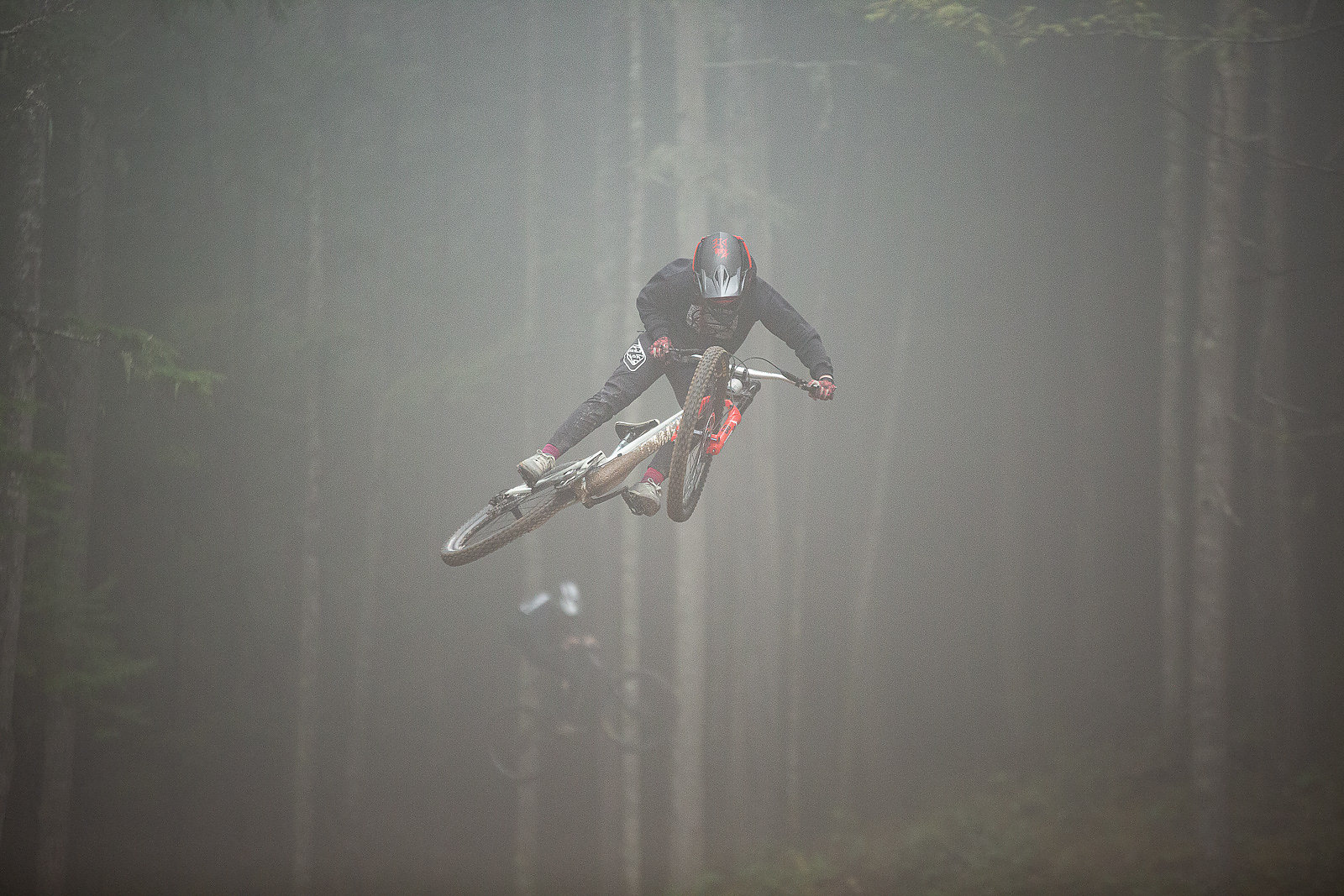
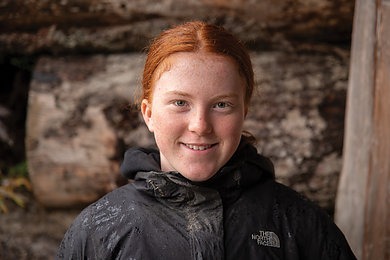
The program is already proving to be well-conceived. In the world tour’s first 2020 stop, Crankworx Rotorua in New Zealand, 16-year-old Squamish local Jackson Goldstone took first place in the men’s Official Oceania Whip-Off Championships—beating a veritable who’s who of the world’s most famous and stylish adult freeriders.
This generational surge of talent is further evidenced by the progression of teenage girls, many of whom are already hitting lines and registering times that are making the elite women watch their backs. Take, for example, 15-year-old Gracey Hemstreet, who honed her aerial skills on the massive jumps of the Coast Gravity Park in Sechelt, BC, and was this year invited to Crankworx Rotorua to compete in several of the main events alongside her friends Vanessa Bruneau, now 16, and Lily Boucher, who will turn 16 at the end of May.
“This group of girls coming up is leaps and bounds ahead of the curve from last year,” says Gracey’s father, Darren Hemstreet, who owns the Coast Gravity Park and says his daughter started dropping him on trails like Whistler’s B-Line at 11 years old. “At the 2019 Canadian Nationals, Gracey was racing in the 14- to 15-year-old category, and in her first-place DH run she posted a time that put her 18 seconds ahead of the girls in the top 3 of the 17-18 category. That qualified her to represent Canada at the DH World Championships in Mont-Sainte-Anne.”
At Crankworx Rotorua, Gracey was invited to compete against the pro women in events like the Whip-Off Championships and Speed & Style, and she’s already proven she’s up to the task: On her home turf at the Coast Gravity Park, she’s been known to join trains of some of the planet’s most cutting-edge male freeriders, including the likes of Logan Peat and Brandon Semenuk.
“Gracey’s favorite line in the park is a double-black pro line, and some of the world’s best riders show up and want to follow her down it,” Darren says. “Seeing a 15-year-old girl ripping a trail that a lot of the elite women can’t even ride is a truly amazing thing. We’re seeing huge growth in the women’s riding, and the progression is just unreal.”
